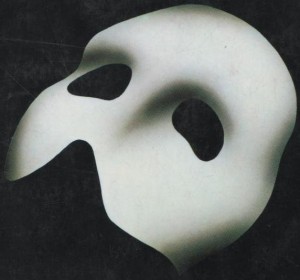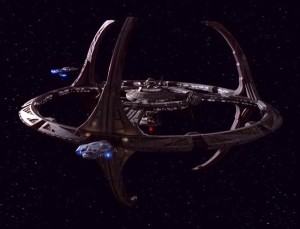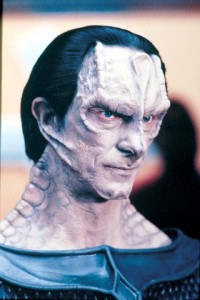This post concludes a three-part essay about the origins of Dunstan Fairfax, the sociopathic villain in my series set during the American Revolution. Read Part 1 and Part 2.
The finest fictional villains are three-dimensional. Their creators didn’t assemble them from a single source of inspiration. These villains earn our respect, even our love, because they run the show and make things happen. Worthy villains bring out the best in heroes. Without them, heroes would be boring.
Years ago, I recognized that I was drawn to the David vs. Goliath theme in my fiction. Goliath didn’t have to be a sociopath, like Fairfax. In fact, in some of my writings, Goliath was clinically depressed, schizophrenic, paranoid, narcissistic, or just down on his luck. But those stories didn’t have the punch of stories I’d written with sociopathic bad guys.
And as it turned out, America embraced the sociopath villain as an icon.
The rise of the sexy sociopath
In theater, cinema, and fiction, a shift occurred to reflect the way the public regarded sociopathic killers. Fictional sociopaths became charismatic, clever, and charming. Dark and sexy anti-heroes. Goliaths to the traditional good-guy protagonist. Perhaps Anthony Hopkins’s creepy, sublime rendition of Hannibal Lector in 1991 capitalized on this growing trend. I didn’t read The Silence of the Lambs or see the movie until nearly two decades later.
 However I did see Andrew Lloyd Webber’s treatment of this trend in the early 1990s when it played at the Fox Theater in Atlanta. If you’d read Gaston Leroux’s original novel The Phantom of the Opera before seeing the theater performance, as I had done, you’d be surprised at how Sir Andrew cleaned up the character of the Phantom, made him resonate with audiences who’d indicated that they couldn’t get enough of sexy sociopathic killers. And if you saw the 2004 movie, released just before the craze for Jeff Lindsey’s sexy, sociopathic protagonist Dexter began, the trend would be even more apparent.
However I did see Andrew Lloyd Webber’s treatment of this trend in the early 1990s when it played at the Fox Theater in Atlanta. If you’d read Gaston Leroux’s original novel The Phantom of the Opera before seeing the theater performance, as I had done, you’d be surprised at how Sir Andrew cleaned up the character of the Phantom, made him resonate with audiences who’d indicated that they couldn’t get enough of sexy sociopathic killers. And if you saw the 2004 movie, released just before the craze for Jeff Lindsey’s sexy, sociopathic protagonist Dexter began, the trend would be even more apparent.
A villain from the future
Sexy sociopathic killers showed up everywhere and everywhen in the entertainment industry. In 1993, the Star Trek franchise launched “Deep Space Nine,” darkest of all Trek incarnations. Action in “Deep Space Nine” occurred on a frontier, where greed and control over others were common themes. In other words, happy hunting ground for sociopaths. Without consistent contact with Central Command, the personal integrity of the man or woman in command at outposts like Deep Space Nine was constantly tested. Often the hallowed values embraced by the Federation didn’t prevail.
Disturbing. I loved it.
 “Deep Space Nine” produced several of the most complex anti-heroes/villains in the Star Trek universe. Gul Dukat, portrayed by Marc Alaimo; Elim Garek, portrayed by Andrew Robinson, and Kai Wynn, portrayed by Louise Fletcher. These characters crossed back and forth over the line of sociopathy numerous times. And they contributed an important quality to the list of qualities shared by worthy villains. They were vulnerable in ways that fascinated me while making me a little nauseated.
“Deep Space Nine” produced several of the most complex anti-heroes/villains in the Star Trek universe. Gul Dukat, portrayed by Marc Alaimo; Elim Garek, portrayed by Andrew Robinson, and Kai Wynn, portrayed by Louise Fletcher. These characters crossed back and forth over the line of sociopathy numerous times. And they contributed an important quality to the list of qualities shared by worthy villains. They were vulnerable in ways that fascinated me while making me a little nauseated.
 In addition, the character of Gul Dukat went through multiple character arcs during the seven years that the show was aired. Thus he became even more of an evolving series villain. A villain who wasn’t static or periodic. Hmm. While Dukat’s character evolved, so did the character of Deep Space Nine’s primary hero, Benjamin Sisko. Watching the episodes that involved interaction between Dukat and Sisko was like watching a chess match, played out between hero and villain. Or David and Goliath.
In addition, the character of Gul Dukat went through multiple character arcs during the seven years that the show was aired. Thus he became even more of an evolving series villain. A villain who wasn’t static or periodic. Hmm. While Dukat’s character evolved, so did the character of Deep Space Nine’s primary hero, Benjamin Sisko. Watching the episodes that involved interaction between Dukat and Sisko was like watching a chess match, played out between hero and villain. Or David and Goliath.
A villain for the past and present
“Deep Space Nine” granted my imagination the green light to draw off decades of groundwork and evolve a series villain for my own frontier. May 1999, I toured the ruins of Fort Frederica, established on pre-Revolutionary War St. Simon’s Island, Georgia. There I found the frontier for a new David v. Goliath story.
Like the vast majority of fictional heroes, the David for this series, Michael Stoddard, initially dodges his Call to Adventure. But Goliath has claimed his turf. Sooner or later, David must step up to the plate.
Let’s face it. Villains win in real life. That’s why the bad guy so often gets his comeuppance in fiction. Interestingly, when an author develops a three-dimensional villain, readers don’t want to see him (or her) destroyed immediately. “Why can’t the bad guy win?” they ask.
The bad guy in a series can win for most of the series. A series villain probably should win for most of the series. A worthy villain does readers a huge favor. He or she forces the hero to grow, to inspire.
Dunstan Fairfax’s character has evolved in my imagination over a lifetime. He’s evolving even as my series progresses. Fairfax, sliding so well into the scarlet skin of primordial America’s bogey monster, is busy hammering a hero out of his counterpart, Michael Stoddard. So I’m letting the bad guy win awhile longer. But rest assured that he’ll eventually get his comeuppance.
Which villain would you like to see get some comeuppance?
**********
Did you like what you read? Learn about downloads, discounts, and special offers from Relevant History authors and Suzanne Adair. Subscribe to Suzanne’s free newsletter.

Gul Dukat is one of my favorite villains, as was Garak. But I preferred the pre-Dominion Dukat, when he was more the worthy adversary type of antagonist, who was not evil or mentally ill, but simply had a different agenda. I liked the Dukat who was demoted to commanding a freighter chasing Klingons, who’d made the right choice to care for his half-Bajoran daughter, Ziyal, and whom even Kira was tempted to follow on his mission in the freighter. I think they ruined him, especially after he went nuts after Damar killed Ziyal and he got into the Pah Wraith nonsense. The last thing that touched me about him was when he was nearly catatonic with grief over Ziyal’s death and he hands Sisko back his baseball, telling him he forgave him, too.
Garak, on the other hand, was a totally different antagonist; the kind who keeps you wondering as to his ultimate loyalties, if he actually has any. And you wondered just exactly what he was capable of. I had the pleasure of speaking with Andy Robinson and his wife, Irene, in 1995 at a convention in Atlanta, and he said that he was in serious danger of being permanently typecast after his first major role as the Scorpio Killer in the first Dirty Harry movie. Now, THERE was a truly sociopathic character.
And, of course, Kai Winn, portrayed by the wonderful Louise Fletcher, who won an Oscar for her portrayal of Nurse Ratched in “One Flew Over the Cuckoo’s Nest”. Winn wasn’t really one of my favorite villains, as I didn’t find much to sympathize with her about. I’m guessing that much of her anti-social behavior came from low self-esteem, of feeling paranoid about being left out, minimized, and overlooked. I’m also guessing that she was modeled after modern radical right religious leaders; the kind who live high on the hog from the Social Security checks of little old ladies.
And, yes, antagonists, villains, and bad guys often win. And that is why I don’t want the protagonist, the hero, the good guy, to always win in the end. Not only is it predictable if you know at the very beginning of a book or film that the good guy will win in the end, I often feel bad for the antagonist, especially if he’s the worthy adversary type of villain or is one who had mitigating factors in their background that has left them damaged and trying to survive the only way they know how.
Indeed, Bernard Cornwell, who created one of my very favorite villains of all time, Sergeant Obadiah Hakeswill of Cornwell’s Sharpe series of novels, has publicly castigated himself for killing Obadiah off in one novel, saying Obadiah was the best villain he’s ever written. He even went on to write three prequel novels where Obadiah could live again. His portrayal on film, by the incomparable character actor Pete Postlethwaite, immediately touched me, as Pete had the ability to portray Obadiah as both menacing and oddly vulnerable at the same time. It was such that he eclipsed Sean Bean’s portrayal of the protagonist, Richard Sharpe, and totally stole the show for me.
I especially like the comparison between Hakeswill and his nemesis, Richard Sharpe. The two men came from very similar backgrounds of poverty, neglect, and abuse, though not identical — Obadiah is a survivor of a botched hanging at age 12, which is guaranteed to mess up anyone. The reader can see that if not for a handsome appearance, a charming personality, and having influential mentors at key points in his life, that Richard Sharpe could have turned out very much like Obadiah Hakeswill. Indeed, Sharpe is a conflicted, tarnished hero, who engages in some of the same type of anti-social behavior that Obadiah does, but he gets away with it and is excused which, no doubt, feeds the resentment Obadiah had for him.
I could go on indefinitely, but I’ll stop before this turns into a novel. I will say that I do want Fairfax to get his comeuppance, as he is one who richly deserves it.
Tracy, thank you for such deep and thoughtful comments. So Cornwell regretted killing off the Hakeswill character, eh? Interesting. I wonder if Sir Arthur Conan Doyle regretted offing Moriarty, too. Multifaceted adversaries are an investment for authors and readers. That’s why I’m giving my readers a few more adventures with Fairfax. 😉
“I often feel bad for the antagonist, especially if he’s the worthy adversary type of villain or is one who had mitigating factors in their background that has left them damaged and trying to survive the only way they know how.” I hear ya, Tracy. If that’s the kind of antagonist that floats your boat, you really must check out Tom Hiddleston’s portrayal of Loki in “Thor,” “The Avengers,” and “Thor 2.”